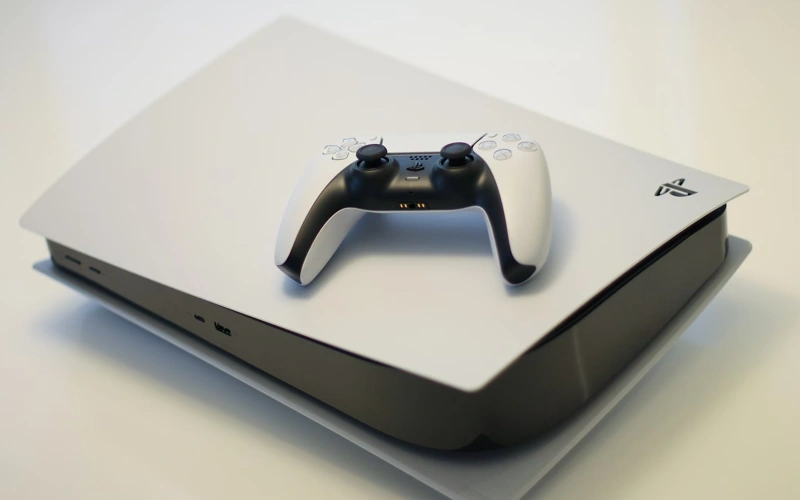PlayStation 5 turns five and its best years are still ahead
As the PlayStation 5 marks its fifth anniversary, Sony celebrates a major milestone with more than 84 million units sold worldwide since its November 2020 launch, reports a Qazinform News Agency correspondent.

The PS5 has now nearly matched the lifetime sales of the PlayStation 4, which stands at 86 million, and it shows no signs of slowing down. During the last quarter alone, Sony sold 3.9 million consoles, driving total software sales to over 80 million titles. With the holiday season approaching, industry observers predict that PS5 will soon surpass its predecessor, becoming Sony’s second-best-selling console after the legendary PlayStation 2.
The platform’s success story is not only about numbers. In five years, PlayStation players have logged over 100 billion hours of gameplay, earned 40 billion trophies, and achieved 110 million platinum trophies. More than 7,500 games have been released by over 4,000 creators. The most-played single-player adventures are Assassin’s Creed Valhalla, God of War Ragnarök, and Hogwarts Legacy, while Fortnite, Grand Theft Auto V, and Call of Duty: Modern Warfare II dominate multiplayer engagement.
Sony’s Game & Network Services division has reported a steady rise in digital game sales and subscriptions. PlayStation Plus active users increased to 119 million, underscoring the platform’s strong community base. Crucially, Sony’s rival Microsoft has taken a very different strategic direction — shifting its focus to PC and cloud gaming. Its massive $68.7 billion acquisition of Activision Blizzard turned Microsoft into a publishing giant, but it left the Xbox Series X without clear identity or exclusivity. Even flagship franchises like Halo are now heading to PlayStation, signaling a symbolic end to the “console wars.”
Yet, despite commercial triumph, the PS5’s journey reflects the changing nature of the gaming industry. The pandemic-era boom, the growing cost of blockbuster game development, and the rise of cross-platform ecosystems have blurred the lines between generations. The PS5’s backward compatibility with PS4 titles delighted users but also diminished the sense of technological leap. Many major titles, including God of War Ragnarök, Gran Turismo 7, and Horizon Forbidden West, launched simultaneously for both consoles, limiting the PS5’s distinctiveness.

Why the PS6 isn’t ready and the PS5 still has room to grow
With rumors circulating about the PlayStation 6, analysts agree that a successor is not imminent. While Sony continues long-term hardware planning, the PS5 still has substantial untapped potential, for reasons that are both technical and strategic.
From a design standpoint, the PS5 represented an evolution rather than a revolution. Built around AMD architecture, it aimed to deliver stable 4K gaming and ultra-fast load times. However, few titles fully exploit its capabilities. Most games still target the performance limitations of the PS4 generation, and even flagship releases struggle to maintain native 4K at 60 frames per second. Developers have prioritized accessibility and scale, reaching as many players as possible, over pushing technical boundaries.
The shift in player behavior also matters. The modern gaming landscape is dominated by massive, persistent online worlds, from Fortnite and Minecraft to Roblox, that run perfectly well on older hardware. These ecosystems reduce the urgency for new console generations. Moreover, Sony’s own missteps, including its short-lived attempt to invest heavily in live-service games, have slowed the release of defining exclusives. Several ambitious projects were canceled, among them multiplayer spinoffs of God of War and The Last of Us.
Still, the PS5 has delivered a number of notable platform exclusives such as Astro Bot, Demon’s Souls, Returnal, Spider-Man 2, Death Stranding 2, and Final Fantasy VII Rebirth. Major third-party successes like Baldur’s Gate 3 and Alan Wake 2 have further strengthened the console’s position. Yet the title expected to define the generation, Grand Theft Auto VI, will arrive only in late 2026, just after the PS5 turns six.
In this context, Sony appears focused on maximizing the PS5’s lifecycle rather than rushing toward a new era. The costs of cutting-edge hardware continue to rise, while the market’s appetite for graphical improvements has noticeably diminished. As cloud gaming develops and PC ecosystems expand, the console’s role is shifting from a hardware competition to a service-driven experience.
Five years on, the PlayStation 5 remains both a triumph and a challenge, a console that has already won its generation but still awaits its defining moment. The PS6 will eventually come, but not soon, because Sony still has much to accomplish with a platform that has redefined gaming through connectivity, community, and creative ambition.
At the end of its fifth year, one conclusion stands out: the PlayStation 5 is not simply a console at its peak. It is a platform still discovering what it can become.
Earlier, Qazinform News Agency reported that Saudi Arabia is strengthening its position in the global gaming industry through a record-breaking acquisition of U.S. developer Electronic Arts (EA), known for the FIFA football series, The Sims, and Mass Effect.
